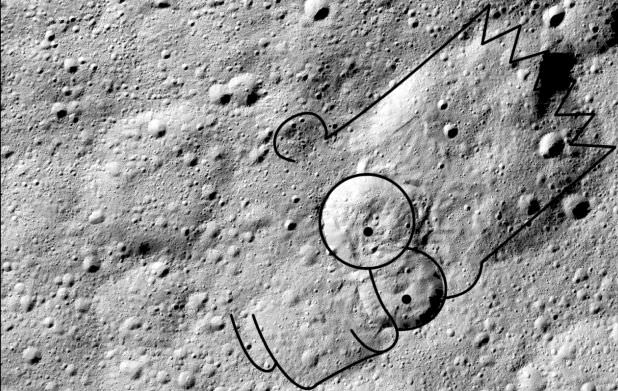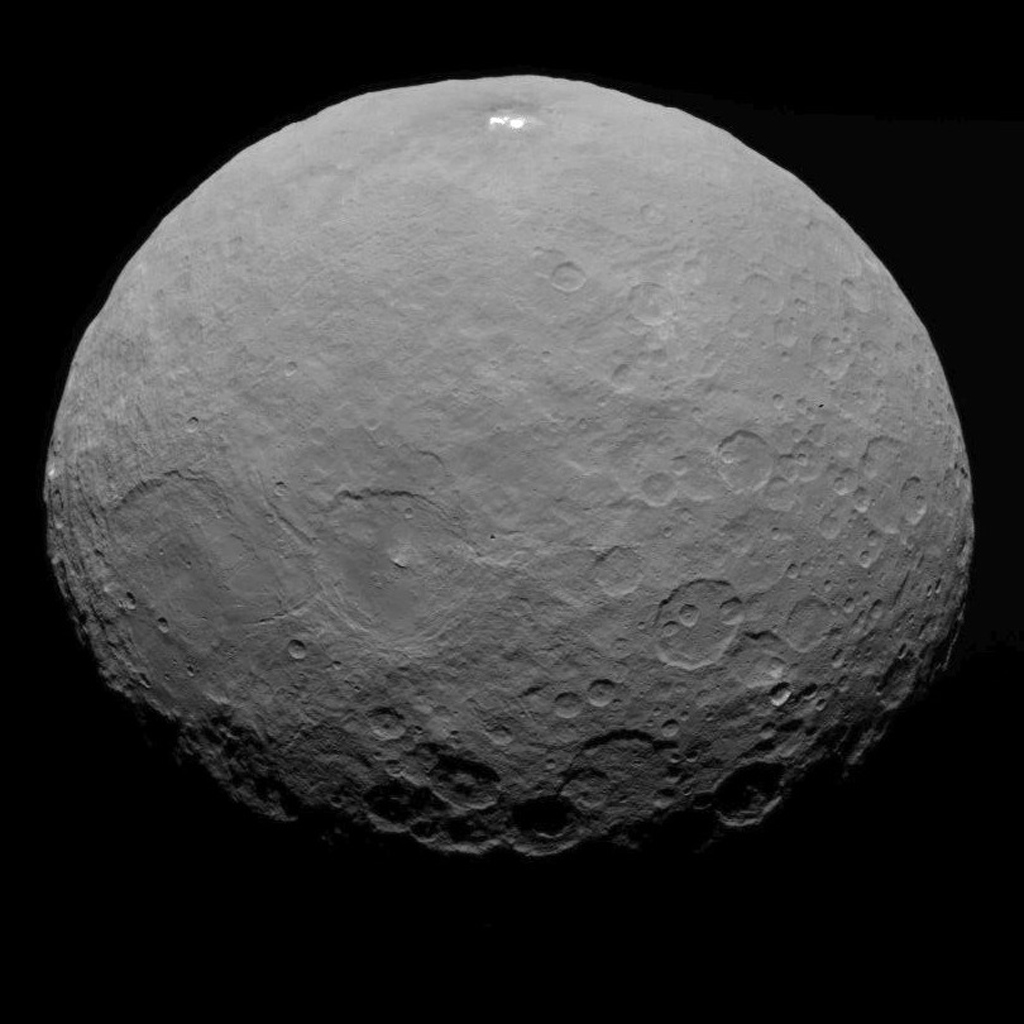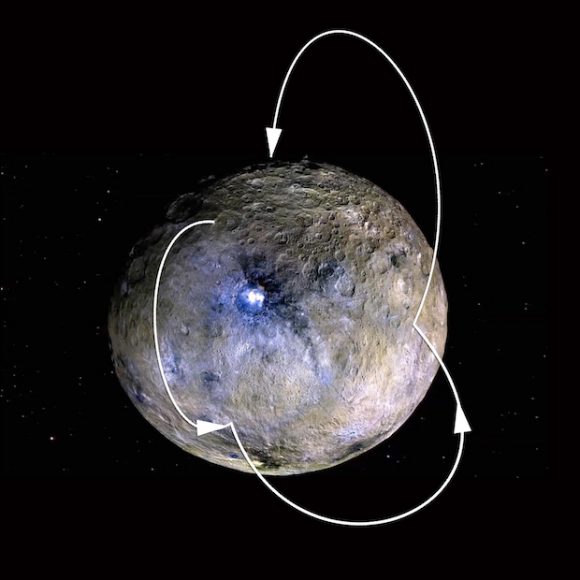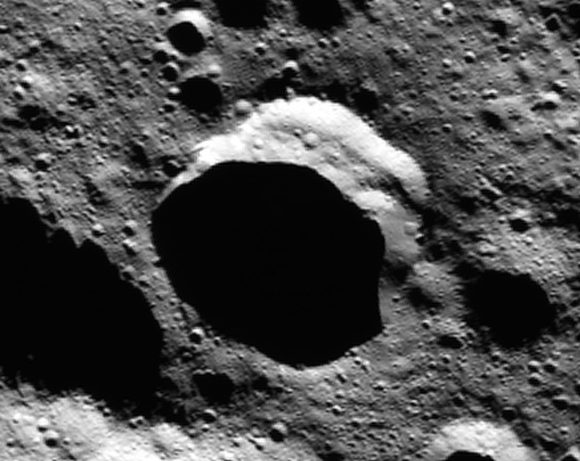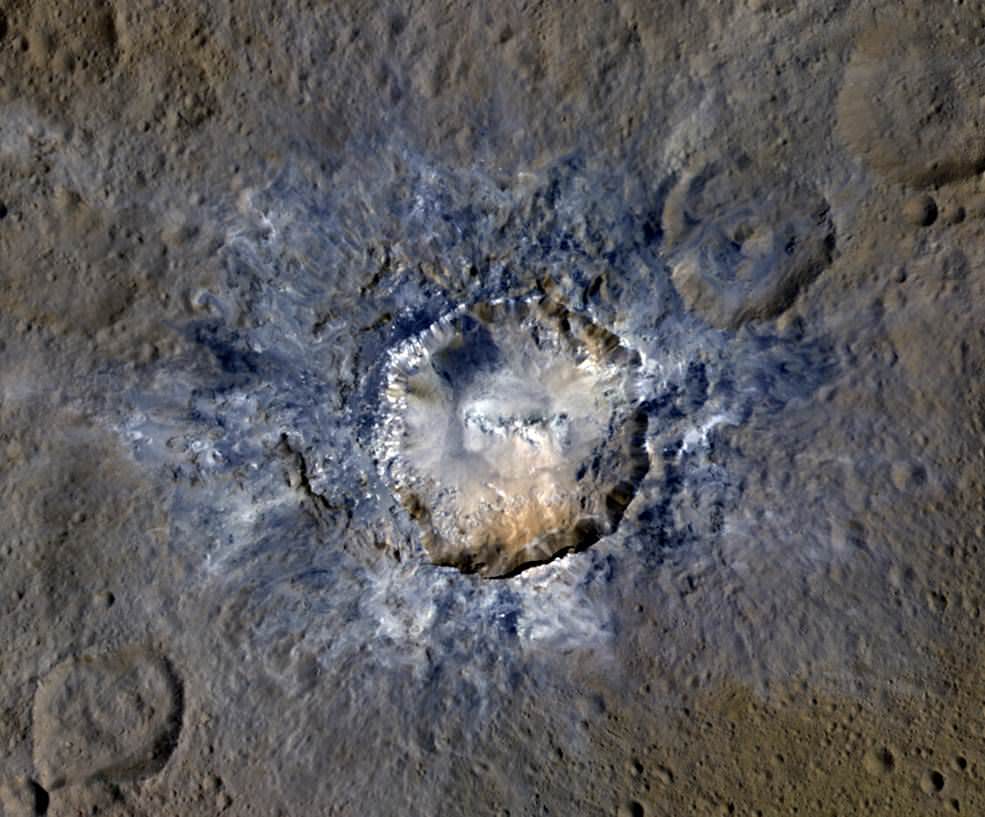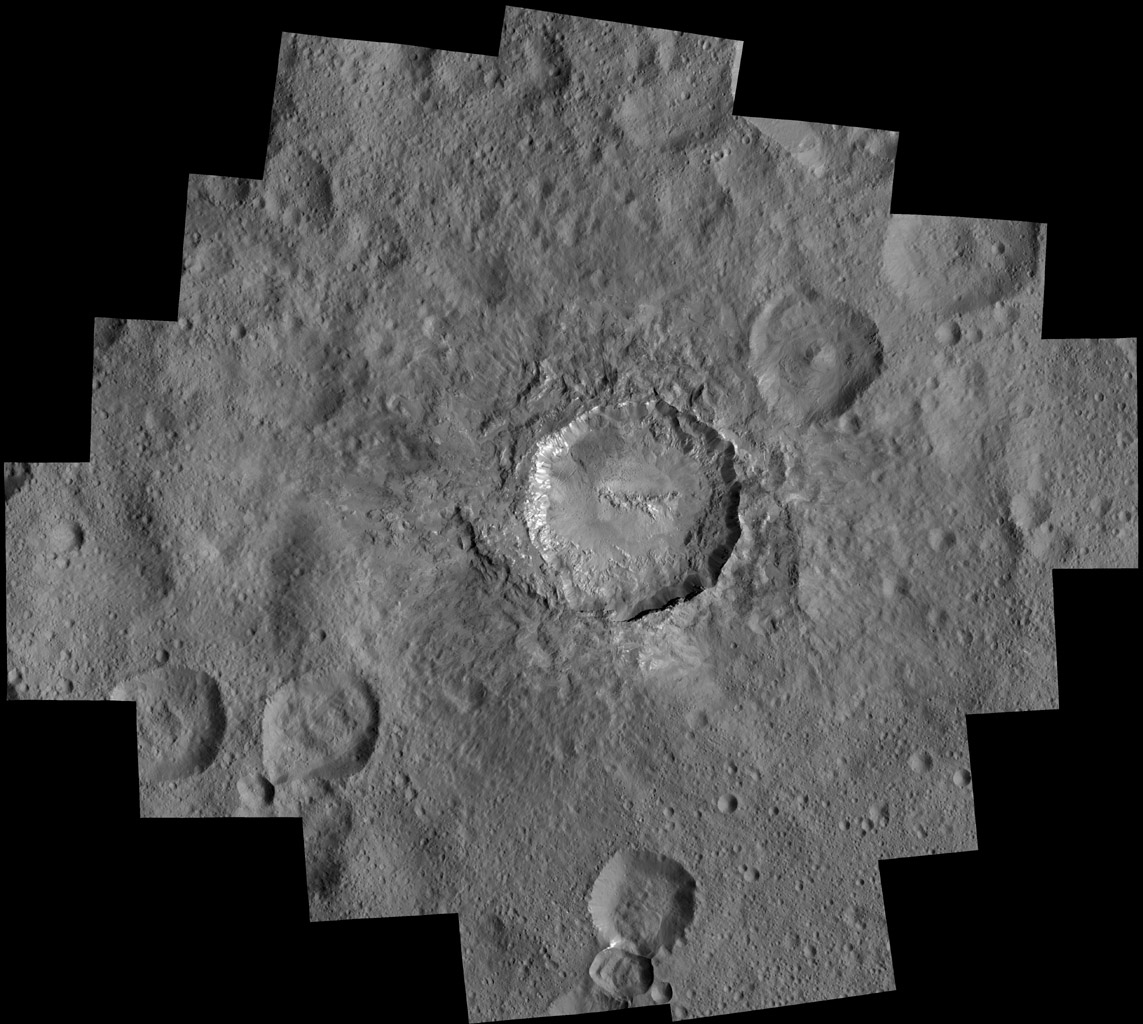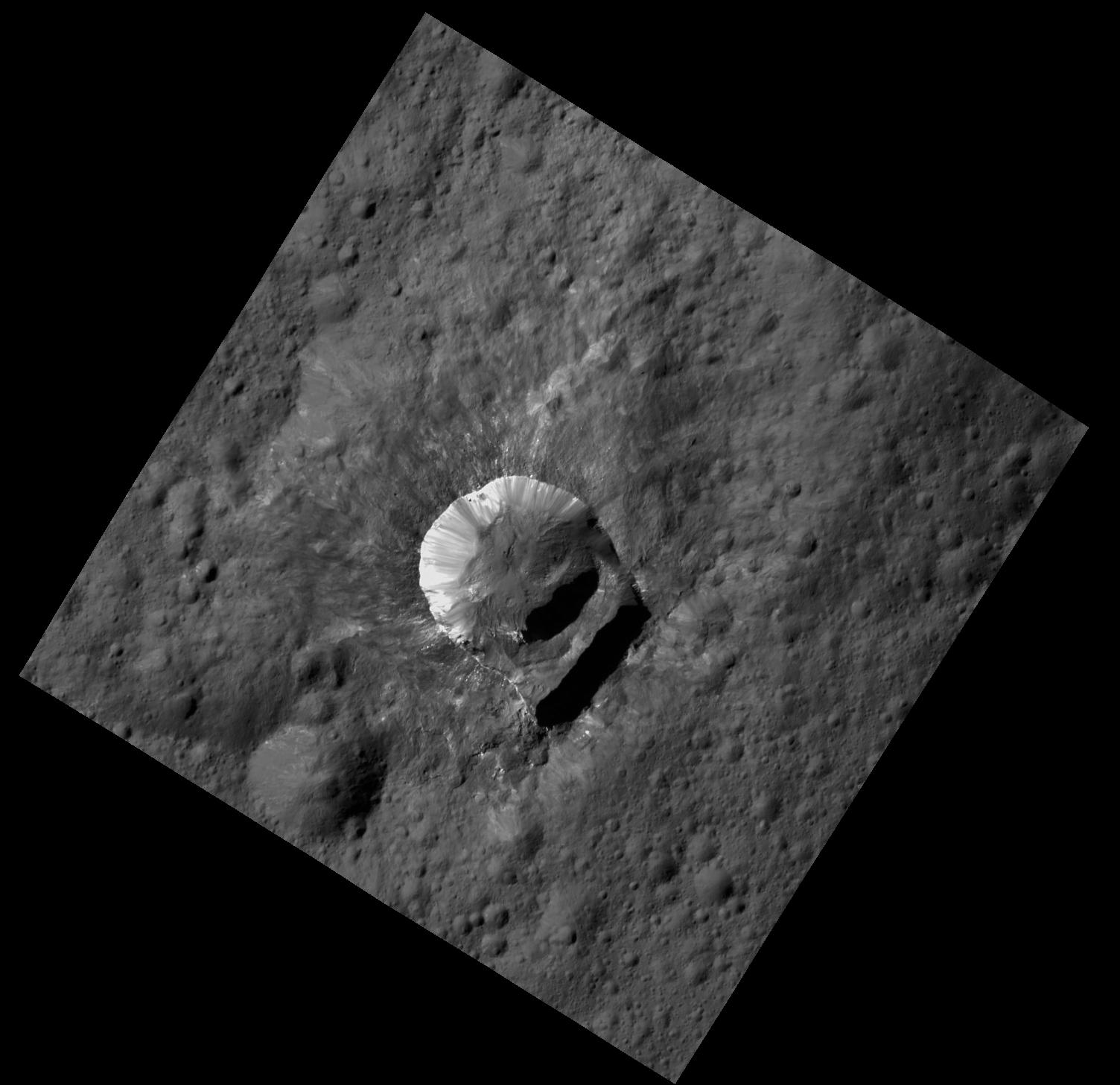Human-kind has a long history of looking up at the stars and seeing figures and faces. In fact, there’s a word for recognizing faces in natural objects: pareidolia. But this must be the first time someone has recognized Bart Simpson’s face on an object in space.
Researchers studying landslides on the dwarf planet Ceres noticed a pattern that resembles the cartoon character. The researchers, from the Georgia Institute of Technology, are studying massive landslides that occur on the surface of the icy dwarf. Their findings are reinforcing the idea that Ceres has significant quantities of frozen water.
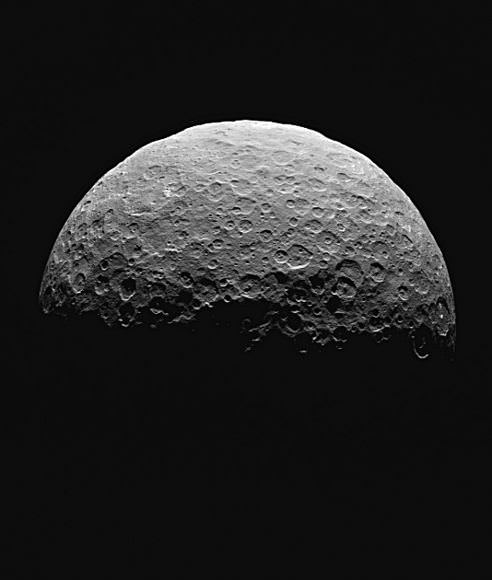
In a new paper in the journal Nature Geoscience, the team of scientists, led by Georgia Tech Assistant Professor and Dawn Science Team Associate Britney Schmidt, examined the surface of Ceres looking for morphologies that resemble landslides here on Earth.
Research shows us that Ceres probably has a subsurface shell that is rich with water-ice. That shell is covered by a layer of silicates. Close examination of the type, and distribution, of landslides at different latitudes adds more evidence to the sub-surface ice theory.
Ceres is pretty big. At 945 km in diameter, it’s the largest object in the asteroid belt between Mars and Jupiter. It’s big enough to be rounded by its own gravity, and it actually comprises about one third of the mass of the entire asteroid belt.
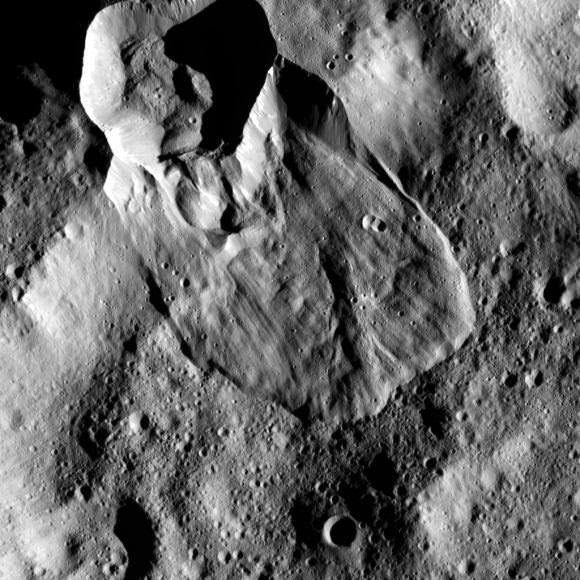
The team used observations from the Dawn Framing Camera to identify three types of landslides on Ceres’ surface:
- Type 1 are large, rounded features similar to glacier features in the Earth’s Arctic region. These are found mostly at high latitudes on Ceres, which is where most of the ice probably is.
- Type 2 are the most common. They are thinner and longer than Type 1, and look like terrestrial avalanche deposits. They’re found mostly at mid-latitudes on Ceres. The researchers behind the study thought one of them looked like Bart Simpson’s face.
- Type 3 occur mostly at low latitudes near Ceres’ equator. These are always found coming from large impact craters, and probably formed when impacts melted the sub-surface ice.
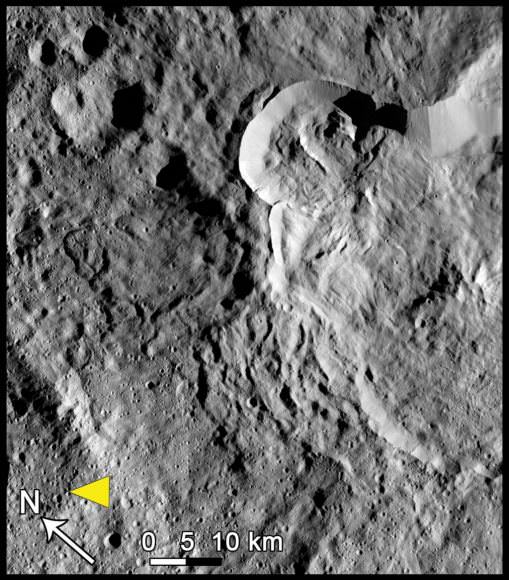
The authors of the study say that finding larger landslides further away from the equator is significant, because that’s where most of the ice is.
“Landslides cover more area in the poles than at the equator, but most surface processes generally don’t care about latitude,” said Schmidt, a faculty member in the School of Earth and Atmospheric Sciences. “That’s one reason why we think it’s ice affecting the flow processes. There’s no other good way to explain why the poles have huge, thick landslides; mid-latitudes have a mixture of sheeted and thick landslides; and low latitudes have just a few.”
Key to understanding these results is the fact that these types of processes have only been observed before on Earth and Mars. Earth, obviously, has water and ice in great abundance, and Mars has large quantities of sub-surface ice as well. “It’s just kind of fun that we see features on this small planet that remind us of those on the big planets, like Earth and Mars,” Schmidt said. “It seems more and more that Ceres is our innermost icy world.”
“These landslides offer us the opportunity to understand what’s happening in the upper few kilometers of Ceres,” said Georgia Tech Ph.D. student Heather Chilton, a co-author on the paper. “That’s a sweet spot between information about the upper meter or so provided by the GRaND (Gamma Ray and Neutron Detector) and VIR (Visible and Infrared Spectrometer) instrument data, and the tens of kilometers-deep structure elucidated by crater studies.”
It’s not just the presence of these landslides, but the frequency of them, that upholds the icy-mantle idea on Ceres. The study showed that 20% to 30% of craters on Ceres larger than 10 km have some type of landslide. The researchers say that upper layers of Ceres’ could be up to 50% ice by volume.

